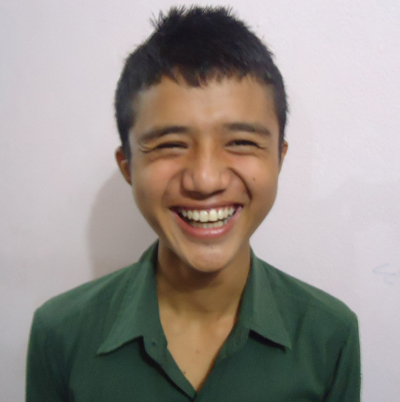Licha’s parents were poor village folk. Licha was eight years old, and although life was difficult for her, she was happy because her parents loved her very much.
One summer day, Licha developed a high fever. Her parents were too poor to take her to the hospital, so she lay on her straw bed at home and suffered silently as her fever mounted. She felt she was about to die and so she called her father and said to him, ‘I have a last wish, Father. I want a flower from the temple that devotees place at the feet of the gods. Please bring one for me.’
Now, Licha’s family were Dalits or so-called ‘low’ caste people, and in the area where they lived Dalits were prohibited from entering temples because they were treated as ‘untouchables’. Licha’s father knew that if he dared to enter a temple to obtain the flower that Licha had asked for, he would be in for major trouble. At the same time, however, he could hardly deny his daughter her last wish. And so, he set off for a temple located in a nearby town, hoping that some miracle might occur through which he might be able to get the flower that Licha wanted.
Licha’s father walked hesitatingly, deep in thought and worry, till he finally reached the gate of the temple. He didn’t have the courage to go further, but just then he thought he heard a voice calling out, ‘Don’t worry! Come in!’
‘It must be the voice of some god,’ he said to himself excitedly, believing it to be a miracle. And so, he rushed inside the temple before anyone could see him and quickly grabbed a flower that was lying at the foot of the idol that stood at the far end, in a dark corner. Then, he ran out, in a tearing hurry to get back to his daughter with the flower that she so desperately wanted.
Just then, the priest of the temple happened to enter the temple compound. Seeing Licha’s father rushing out, he suspected that something was wrong. He asked him where he was from and what his caste was. When Licha’s father told him that he was a Dalit, he flew into a rage. He shouted out to his neighbours, telling them that a Dalit had dared to enter the temple.
On hearing the priest’s loud clamour, a gang of men rushed into the temple compound, armed with sticks. They beat Licha’s father so badly that he almost fell unconscious. Then, they locked him in a shed as a punishment. Seven days later, they let him off, but warned him never to enter a temple again.
Licha’s father made his way back to his village. He was badly bruised and greatly distressed by the way he had been treated. But, at least, he cheered himself thinking, he had with him the flower that Licha had asked him for. When he reached the entrance of his home, he cried out, ‘Licha! I’ve brought you your flower! When you see it, you’ll be so happy that you won’t ever fall sick again!’
Usually, whenever her father returned home from a visit to the town, Licha would run out of the house, hoping that he would have brought her a toy or some chocolates. But not so this time. Not a word or sound came out of the house.
Licha’s father’s heart skipped a beat. ‘Licha! Licha!’ he shouted at the top of his voice as he rushed into the house.
Just then, his neighbor called out to him. ‘Brother! Your Licha is no more. She died waiting for you and the flower you had promised her.’
But that wasn’t all, the neighbor added. Licha’s death had proved to be such a shock to Licha’s mother that she had suffered a massive heart-attack and had died just minutes after her daughter.
The jolt at the death of his daughter and his wife was simply too much for Licha’s father to bear. It drove him mad and he lost all his senses.
If you visit his village you can still see him—‘Mad Flower-Man’ he is now called—sitting all day outside his house, waiting for Licha with the remains of the flower she had asked him for in his hands, hoping that one day she might come back so that her last wish can be fulfilled.

Dhiresh Moyong is a class IX student at the Mahabodhi School, Diyun, Changlang District, in eastern Arunachal Pradesh. He is fifteen years old. He loves roaming in the forests that abound near his home, and wants to become a poet when he grows up and to travel across the world.







Comments
Add new comment